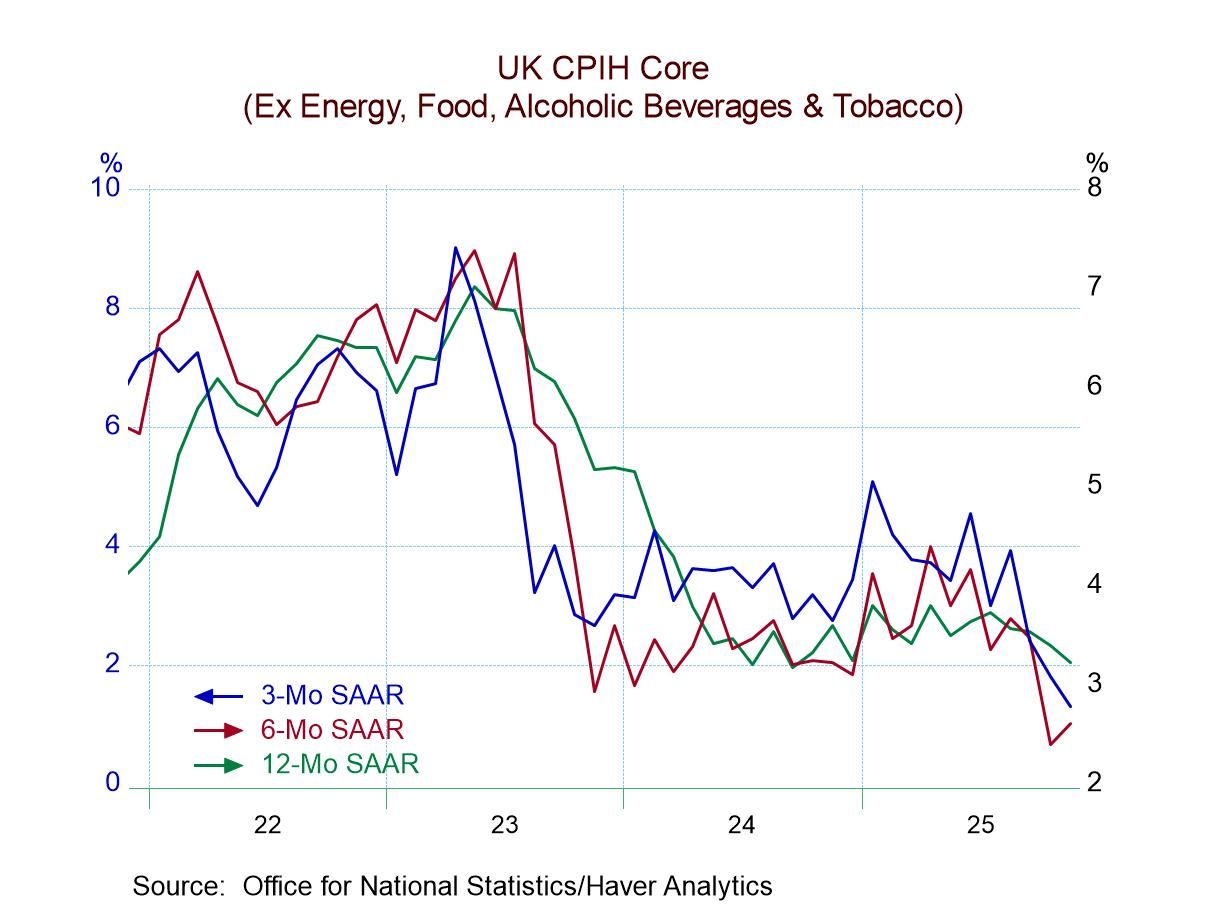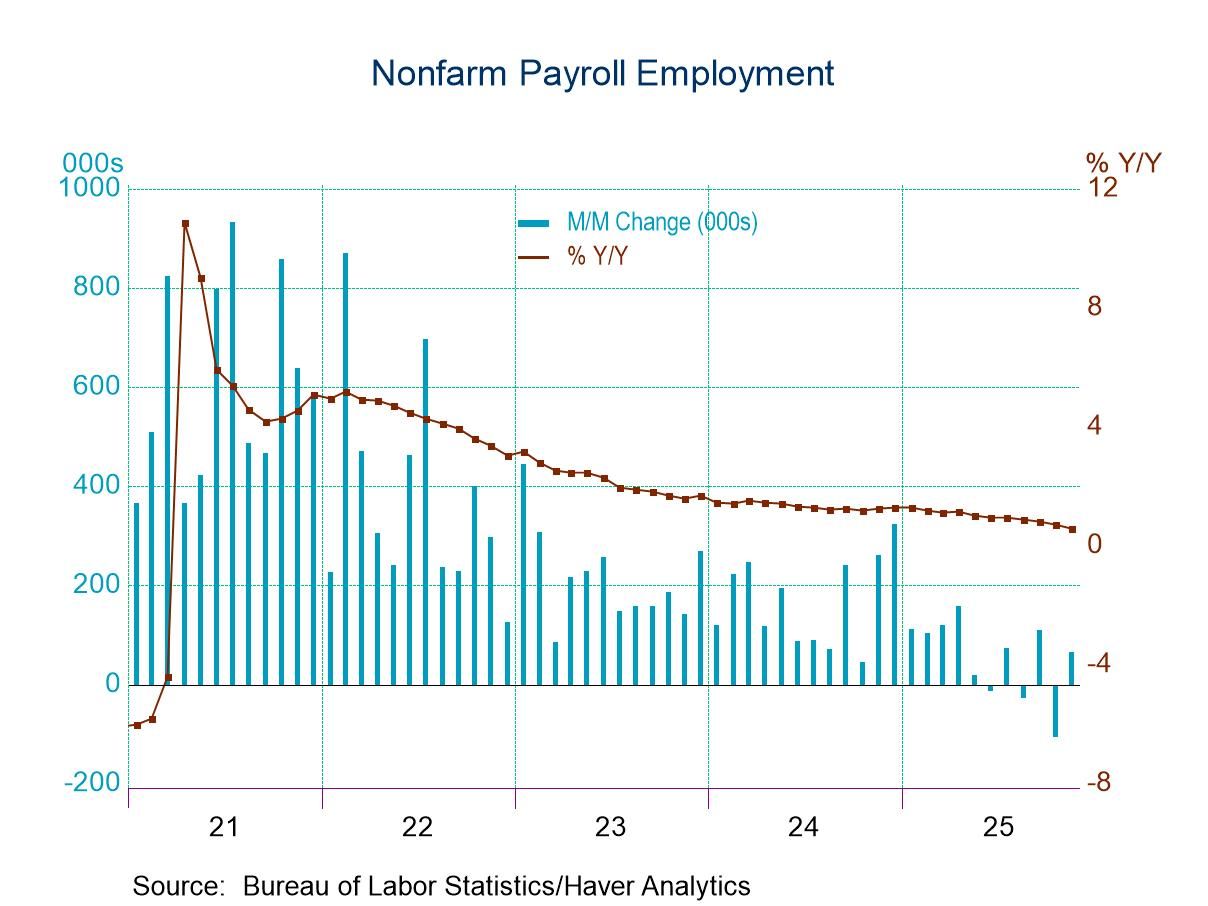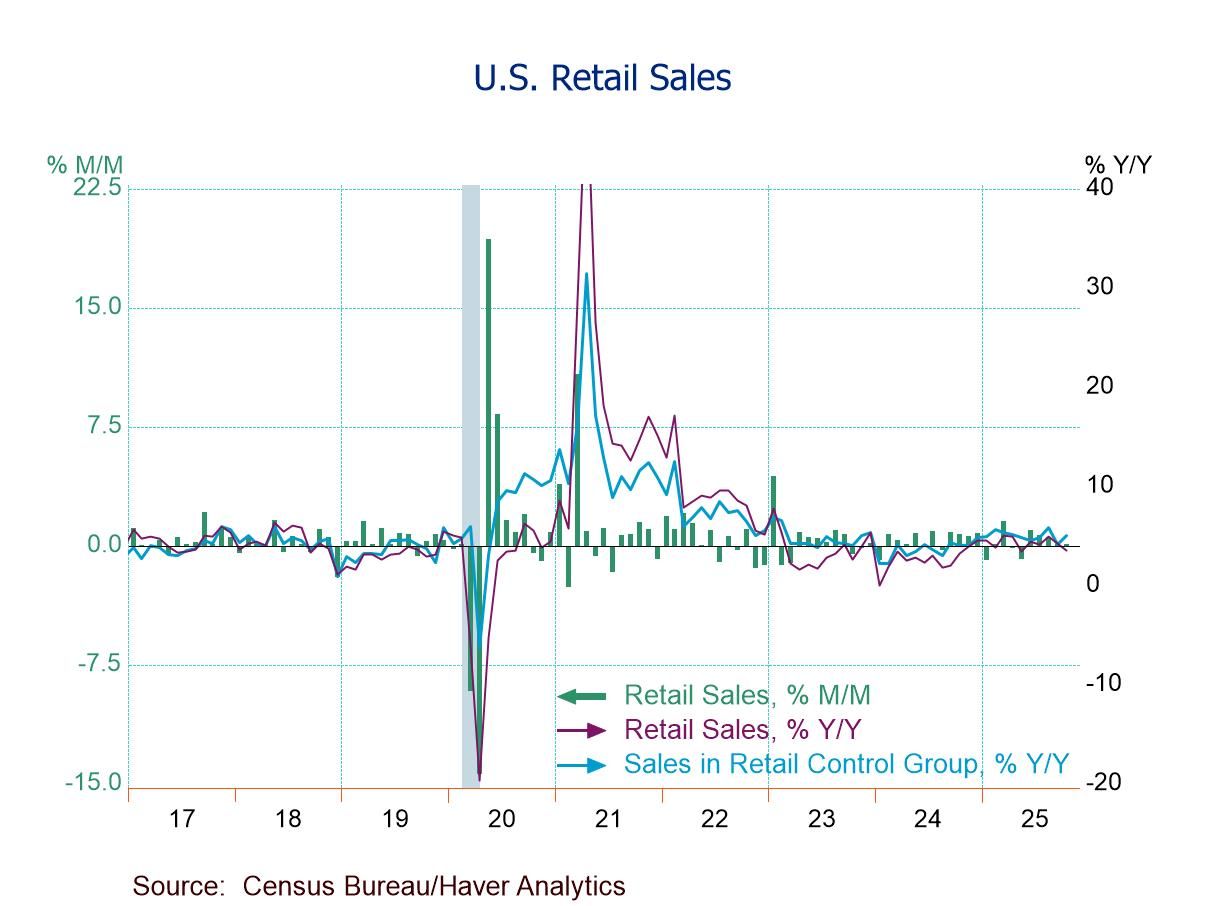 Global| Nov 05 2024
Global| Nov 05 2024OECD LEIs Global Expansion Still Broadly Underway

The OECD leading economic indicators normalized or amplitude adjusted uniformly show that expansion is still underway in the global economy. The OECD-7 metric is up by 0.1% in September for the normalized leading indicators after being flat in August. There are positive expansions indicated over 12 months, six months, and three months. Apart from looking at growth rates, the level of the indicator for the OECD 7 has a 55.8 percentile standing, placing it above its historic median value. For the core group of OECD countries, expansion remains firmly signaled underway, even if not strongly.
The normalized indicator for Japan is flat in September after being flat in August. It shows a decline over 12 months but net increases over six months and three months with a queue percentile standing on the index at 50.7% which barely puts Japan over its median and puts it into growth territory; however, it does stay in growth territory slightly above median growth.
For the United States, the change in the normalized leading indicator in September is zero after zero in August as well. The U.S. has an increase of 0.1% over 12 months; it increases to 0.3% at an annual rate over three months and six months, hardly strong readings. However, the queue standing on the LEI level for the United States has a 57.2 percentile standing, a solid standing, clearly above the historic median (at a 50% standing) and clearly putting the United States into growth territory.
The OECD likes to look at six-month changes in its metrics. The second panel of this table looks at the changes in six-month averages month-to month and the net change over six months over progressive 6-month periods. On this score, we see September and August expansions in the OECD-7 grouping as moderate and consistent increases in September and August. For Japan, there are small consistent increases; from the United States strong increases in September and August. China logs two severe monthly declines. However, over broader periods based on six-month changes, we see increases logged even for China. The exception is having a decline from 6-months ago in Japan in its six-month change. Turning to the queue percentiles where we rank the different regions or countries on six-month growth rates, the OECD 7, Japan, and the U.S. have percentile standings in a range of 55% to 65% clearly above their historic medians while China comes in with a standing at its 39th percentile below its historic median.
The bottom panel of the chart shows the amplitude adjusted leading indicators from the OECD and here we look at the levels of the indicators with levels above 100 indicating normal to above normal growth and levels below 100 indicating below normal or below average growth. We see negative scores for France, Italy, Spain, and China consistently over the last four months. The ratio of the current index to six-months ago provides a negative reading for Spain and for China. The other metrics in the table signal ongoing expansion in the United States, the United Kingdom, Japan, the OECD 7, and Germany. These are relatively broad readings indicating continuity and global growth. However, the growth rates aren't particularly strong. For example, the German index has only at 50.7 percentile standing, the same as Japan's. These are razor edges standings, barely above their historic medians but again signaling growth but growth that is above the historic median value by only a small margin. The OECD 7 has a standing at its 55.8 percentile. Italy, France, and the United States have readings that are in their 57th percentile, again, relatively firm above their historic medians. For now, the strongest reading is coming from the U.K. with a 93.5 percentile standing. Spain and China both have percentile standings below their 50th percentile and are at the mid-30th percentile mark.
Most readings are above historic medians

The OECD indicators seem to produce a brighter picture than other metrics seem to show since the signals are uniformly in favor of growth. However, the rankings are a bit of a come down since there are few indications of strength in the OECD metrics looked at as rankings on levels in any of their formats. The global economy continues to press ahead. Unemployment rates continue to be low. And inflation continues to hover above central bank targets. Growth is not strong enough to impress anyone. It is solid enough to be real and push unemployment rates lower or keep them below historic norms for the most part globally. But there is not enough growth to satisfy policy markers at central banks who have chosen to be in a rate cutting cycle despite ongoing low unemployment and inflation overshooting, but not accelerating inflation.
Robert Brusca
AuthorMore in Author Profile »Robert A. Brusca is Chief Economist of Fact and Opinion Economics, a consulting firm he founded in Manhattan. He has been an economist on Wall Street for over 25 years. He has visited central banking and large institutional clients in over 30 countries in his career as an economist. Mr. Brusca was a Divisional Research Chief at the Federal Reserve Bank of NY (Chief of the International Financial markets Division), a Fed Watcher at Irving Trust and Chief Economist at Nikko Securities International. He is widely quoted and appears in various media. Mr. Brusca holds an MA and Ph.D. in economics from Michigan State University and a BA in Economics from the University of Michigan. His research pursues his strong interests in non aligned policy economics as well as international economics. FAO Economics’ research targets investors to assist them in making better investment decisions in stocks, bonds and in a variety of international assets. The company does not manage money and has no conflicts in giving economic advice.






